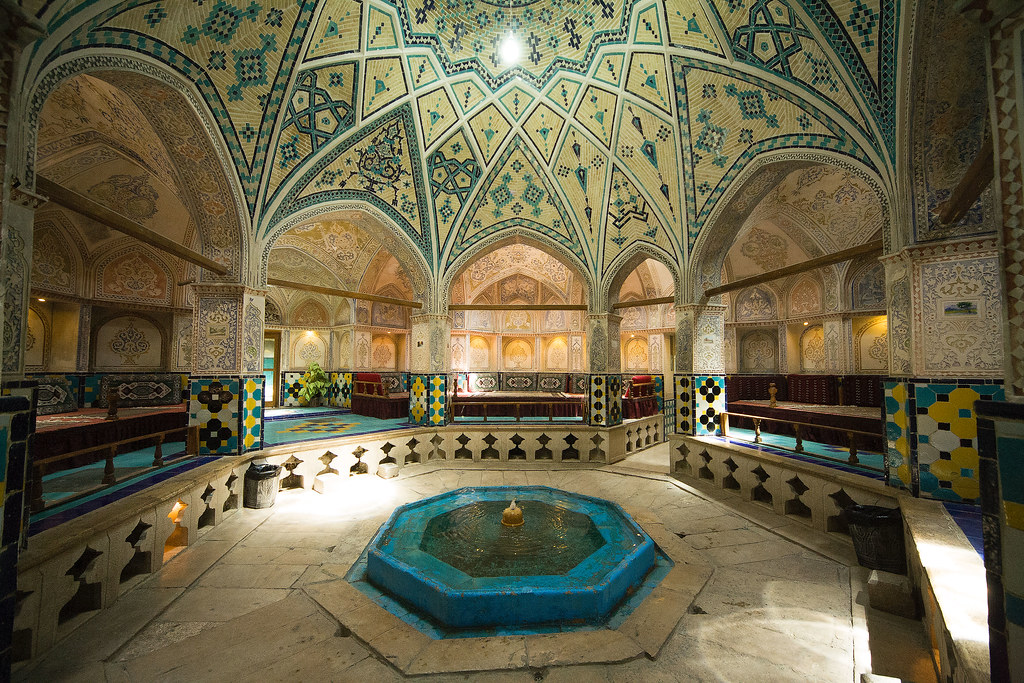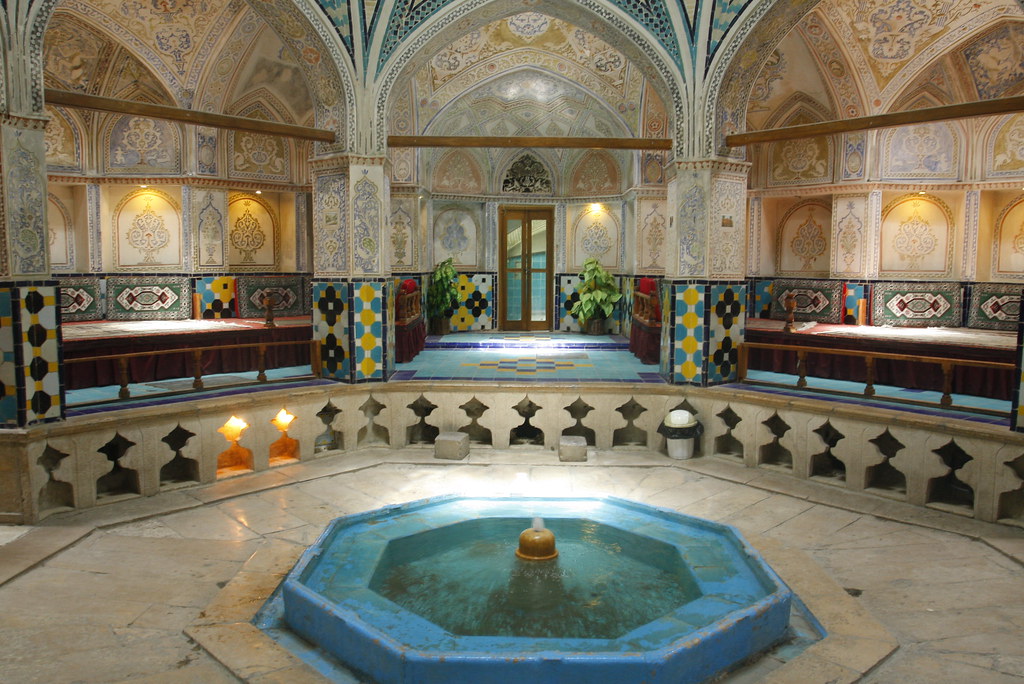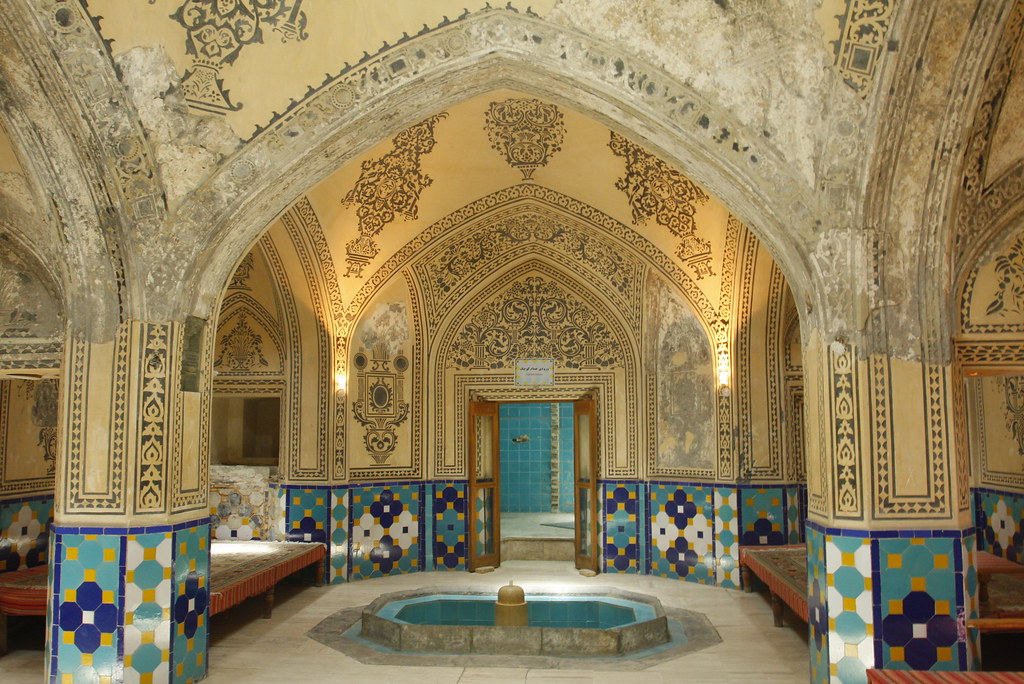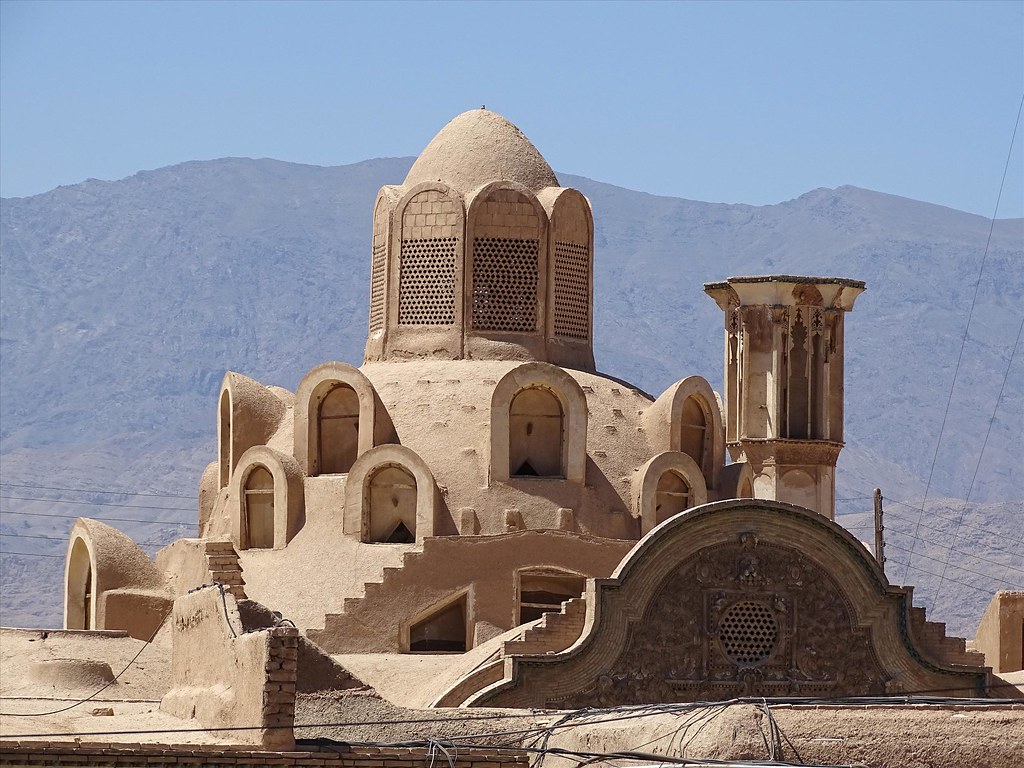The Sultan Amir Ahmad Bathhouse in Kashan, Iran, is a 16th century public bathhouse built during the time of the Safavid empire, which ruled Iran, along with parts of Turkey and Georgia, from the 16th to 18th centuries. Characterized by vaulted ceilings, exquisite mosaics and paintings, this gorgeous structure is one of the most beautiful and best preserved historic bathhouse in Iran today. Declared a national heritage site by Iran’s Cultural Heritage Department in 1956, the bathhouse is named after Imamzadeh Sultan Amir Ahmad, whose mausoleum is nearby, although little is known about this holy man.
The bathhouse has the shape of a large octagonal hall with an octagonal pool in the middle, and surrounded by eight pillars separating its outer sitting area. This is not the main bathing area though, rather the dressing hall or Sarbineh, where bathers lounged and socialized. Since ancient times, bathhouses played an important role in the social lives of Iranians and they still do today. Bathhouses are intended not only to cleanse oneself and relax but to gather, meet, gossip and even pray.
Photo credit: J.Ma soumi/Flickr
The main washing area or Garmkhaneh of Sultan Amir Ahmad Bathhouse contains multiple private hot baths. The Garmkhaneh is connected to the Sarbineh by a corridor with multiple turns to minimize the heat and humidity exchange between the two areas.
The interior of the bathhouse, especially the Sarbineh, is decorated with turquoise and gold tilework, plasterwork, brickwork as well as artistic paintings. The roof of the bathhouse is made of multiple domes that contain convex glasses to provide sufficient lighting to the bathhouse while concealing it from the outside.
The phenomenon of bathhouses has existed in Iran since pre-Islamic days. After the population converted to Islam, ritual purity through washing one’s body became a requirement of religious life, and bathing became an integral part of life. Once there were thousands of bathhouses all across the country. Their popularity has declined in recent times, as most modern homes now have showers and baths. The few public bathhouses that remain in Iran now draw only day laborers and tourists.
Photo credit: reibai/Flickr
Photo credit: reibai/Flickr
Photo credit: reibai/Flickr
The roof of Sultan Amir Ahmad Bathhouse. Photo credit: reibai/Flickr
Sources: Wikipedia / historicaliran.blogspot.in / Encyclopedia Iranica





















Comments
Post a Comment